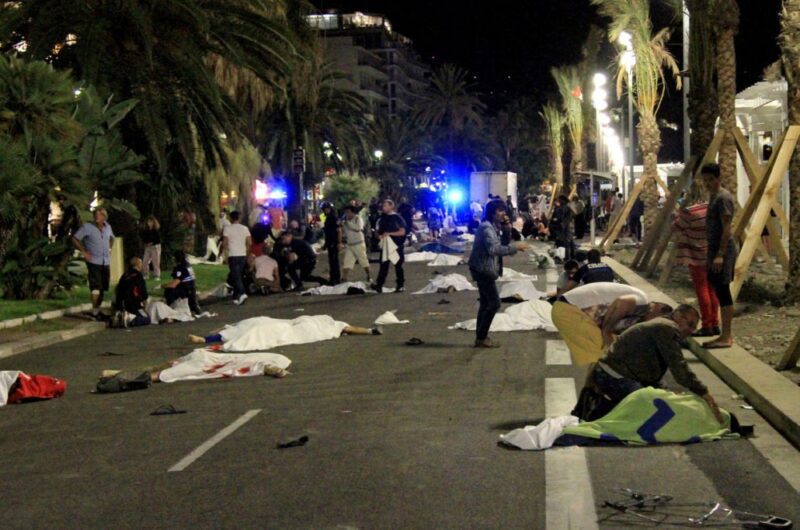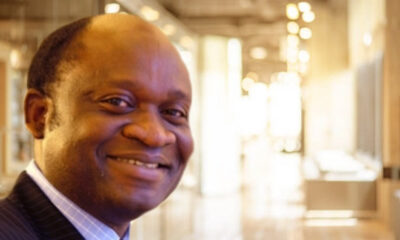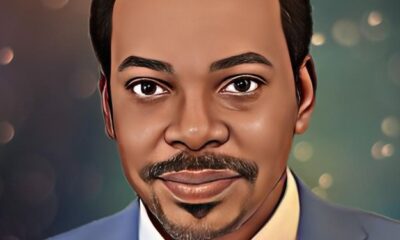Global Issues
France: The Terror This Time -By Dele Agekameh


Nice, 14 July 2016, Bastille Day – A terror truck kills 84 people in the French Riviera
It has happened again and again, and the destruction of property and human lives – colossal. In less than 18 months, France has been hit by a number of terrorist attacks which have left people wondering whether there is any solution in sight to these incessant and debilitating attacks. Three of the attacks, considered as major ones, are worth mentioning.
The year 2015 opened in France with the Charlie Hebdo offices and Hypercacher supermarket, both in Paris, coming under attack. The attacks, which ran through three days – January 7 to 9 – involved two brothers, Said and Cherif Kouachi. The terrorists attacked the offices of Charlie Hebdo, a popular French satirical magazine, killing 12 people, including the editor and their most celebrated cartoonists. The following day, tragedy struck again in Paris when a policewoman was murdered by a man simply identified as Ahmedi Coulibaly. Coulibaly then went ahead and held up a Jewish supermarket where he shot and killed four more people before the police, who were hot on their trail, succeeded in killing him and the Kouachi brothers in separate hostage stand-offs.
Other isolated attacks took place in February, April and June. Now, if those attacks could be categorised as isolated cases with less casualties, the same cannot be said about the attacks in November 2015. The attacks which took place in Paris, occurred on the night of November 13 into the early morning of November 14. On that fateful day, gunmen and suicide bombers almost simultaneously hit a concert hall, in the neighbourhood of a major stadium, restaurants and bars in the heart of Paris. By the time the smoke died down, 130 people were left dead while hundreds of others were wounded. The deadliest and most devastating attack of the night occurred at the Bataclan Theatre, a concert venue on Boulevard Voltaire where Californian rock band, Eagles of Death Metal, was in session reeling out tunes to Rock lovers. In that place alone, 89 people died as the gunmen fired Kalashnikov-type assault rifles from all directions into the jolly crowd.
After what looked like a one and a half months’ respite, the year 2016 opened on a bloody note as gunmen unleashed terror in Valence, south-eastern France on January 1, 2016. A few days later, on January 7, a man who was apparently trying to attack a police station on the anniversary of the Charlie Hebdo attacks, was shot dead by police. There was relative peace for about six months after those two attacks in January.
However, that relative peace was punctured last Thursday, July 14 when at least 84 people were killed, including children, after a truck ploughed through a crowd celebrating Bastille Day in the southern French city of Nice. The driver ploughed on for two kilometres (1.2 miles) on the Promenade des Anglais at about 23:00 local time, before he was shot dead by the police. Witnesses say the speeding lorry swerved and zigzagged in an apparent attempt to hit more people. Police said the attack was orchestrated by Mohamed Lahouaiej Bouhlel, a 31-year-old Tunisian-born French man, on a day the whole country was celebrating Freedom.
Bastille Day is a national celebration and holiday in France. It is a day set aside to celebrate the breaking into the Bastille – an 18th century medieval fortress and Parisian prison where political rebels were held. The day has been celebrated annually for the past 227 years. It all happened during the reign of Louis XVI. That time France was confronted with a major economic crisis, partially initiated by the cost of intervening in the American Revolution, and exacerbated by a regressive system of taxation which was imposed on the populace.
On May 5, 1789, the Estates-General convened to deal with this issue. But they ran into a brick wall as they were held back by archaic protocols and the conservatism of the Second Estate. The Second Estate consisted of the nobility which were not more than a mere two percent of France’s population at the time.
On June 17, 1789, the Third Estate, with its representatives drawn from the commoners, reconstituted themselves as the National Assembly, a body whose purpose was to see to the creation of a French constitution. The king initially opposed this development, but was forced to acknowledge the authority of the assembly, which subsequently renamed itself the National Constituent Assembly on July 9, 1789. By this time, Paris was close to insurrection.
The Palais-Royal and its grounds became the site of an endless meeting. Violence and conflict later ensued between the Royalist and anti-Monarchist elements across Paris. On July 14, the crowd broke open the Bastille prisons to release some grenadiers of the French guards, reportedly imprisoned for refusing to fire on the people when they were asked to do so in order to break the people’s protest. The Assembly swiftly recommended the imprisoned guardsmen to the clemency of the king who was left with no choice but to accede to their request. Thereafter, the grenadiers returned to prison and received instant pardon. The rank and file of the regiment, previously considered reliable, now leaned towards the popular cause.
Today, rather than commemorating the storming of the Bastille itself, the three tenets of the republican national motto; “liberty, equality and fraternity,” is celebrated nationwide. This was what the people trooped out to celebrate in Nice before the truck driver deliberately ran into them in an orgy of massacre, the signpost of terrorists. To put it succinctly: A windy night filled with fireworks and then, suddenly, terror. It is worthy to note that, in addition to patriotic pride, Bastille Day in France will henceforth bear the marks of Thursday’s bloodbath.
Surely, the wide rampage of a truck on a touristy, festive Mediterranean shoreline is a sinister boost to xenophobic narratives about terrorism that will reverberate across the globe. This is because Nice, where this madness occurred, is a cosmopolitan city. It is a huge ethnic and social mixture, a place where you find tourists from all over the world. The city’s palaces and palm tree–lined squares have long been celebrated as part of France’s cultural heritage. Therefore, a terror strike in this city is not just at the diverse fabric of a society but at a vivid tourist industry and at an entire country’s sense of self.
Last Thursday’s attack represents a new reality in terrorism and terrorist attacks. For all the years of trepidation that terrorists would develop more sophisticated methods to ply their lethal trade, the attack in Nice is the realisation of a fear that actually turned out to be far worse: a form of violence that could render the usual defences of a nation useless. Now, an everyday vehicle commonly seen on the roads everywhere around the world has been turned into an object of fear and menace. This is a new dimension in which the tactics employed by terrorists become more rudimentary and their targets more random. I am sure defence planners will recognise the fact that intelligence gathering and security measures which have long been the thinking of security experts are of limited utility and can never provide absolute safety from a terrorist or terrorists who decide to kill at any point.
While the precise motive of this latest act of terror is yet to be known, it is very clear that France has become a primary target for the international jihadist terrorist movement for some reasons. The country is close to the Middle East. It is militarily active and proudly self-assertive. Above all, it harbours Europe’s largest Muslim minority.
As terrorism itself becomes harder to prevent or to defend, policy experts are of the opinion that governments across the globe should address two deeper but murkier problems: the ideology that encourages such violence and the social-cum-political factors that drive an individual to accept such insidious ideology.
For comments (SMS only) to: 08058354382



















